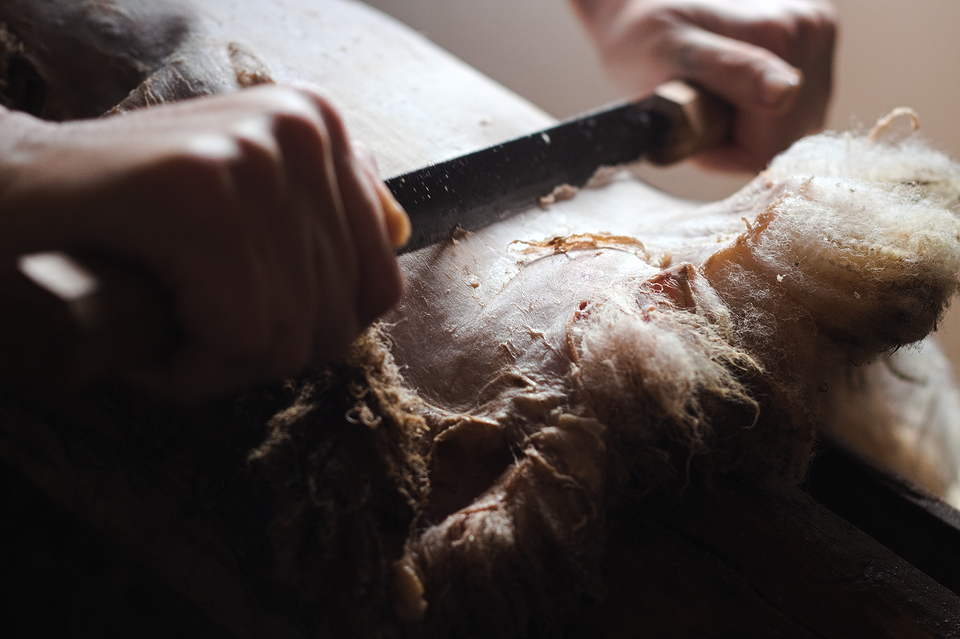Process & Care of Sheepskins

All of the sheepskins and leather that I offer are tanned naturally by me with bark and plant derived tannins in my home workshop in the Blue Ridge/Appalachian mountains, where I also raise a small flock of sheep. I am always learning & refining my process (as a true Virgo!), with the commitment to offer organically tanned sheepskins and leather products that are durable, heirloom-quality and free of heavy metals, petroleum-derived solvents and synthetic oils and finishes. The ‘waste’ from my tanning process is used to mulch fruit trees and perennial herbs in my garden, so I use nothing I would not be comfortable eating. My sheepskins are meant to be worn next to your skin, to be cuddled up with, to honor all of the gifts that the ruminant gives.
See available sheepskins

What ingredients are used to tan your sheepskins?
The primary tanning agent for my sheepskins is mimosa Acacia spp. bark tannins, with additional ingredients for prepping, cleaning and softening the skin including: salt, citric acid, soap, distilled vinegar, sunflower seed lecithin, and olive or sunflower oil. Much of my current process is owed to Matt and Michelle Richards of Traditional Tanners in Ashland, Oregon, who are the first certified organic sheepskin tannery in the US, and have been generous teachers. At this time I am not able to source enough local bark for all of my hides, so I primarily use tannin extracts and ground tanoak bark harvested in northern California by Traditional Tanners.
Where do you get your hides?
I work with a few sheep farmers, butchers and hunters mostly in western North Carolina to divert these hides from the waste stream. There has never been a strong market for raw hides in Appalachia (and across most of the US the market is vanishing), so most meat processors send them to the landfill along with the other "undesirable" offal and bones. It is my hope that we no longer see hides as a "by product", but as highly valuable textiles in their own right, along with all of the other 'waste' of meat production: sinew, bones, and nutrient dense organs that were once cherished by our ancestors.

Do you offer custom tanning services?
I do, although I can only take a limited number each year. For more info, see Custom Tanning.
